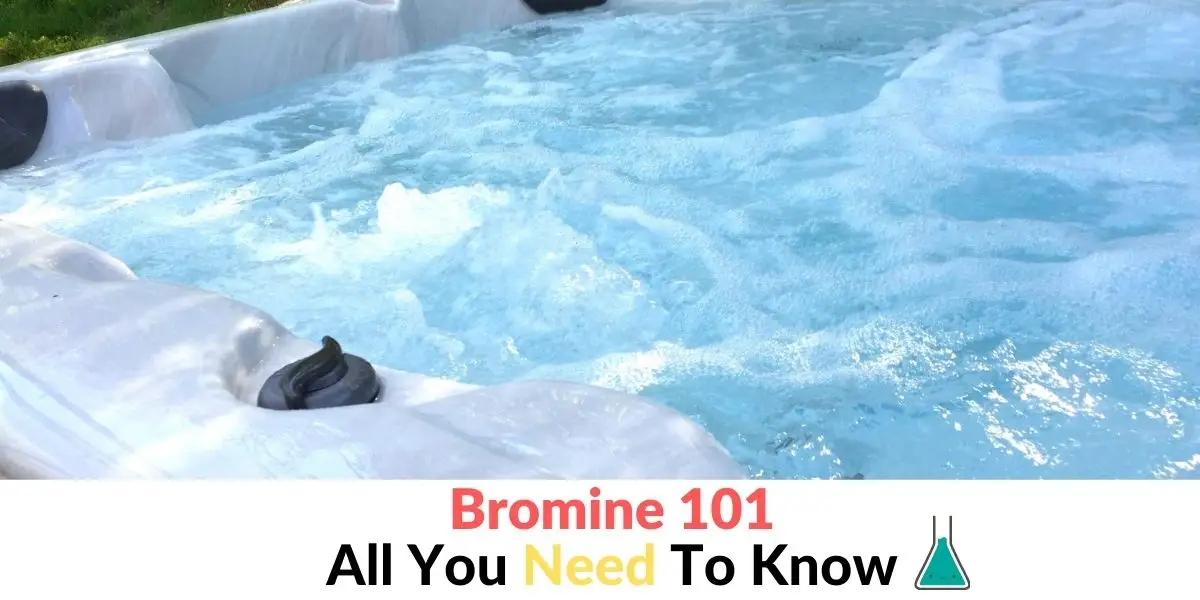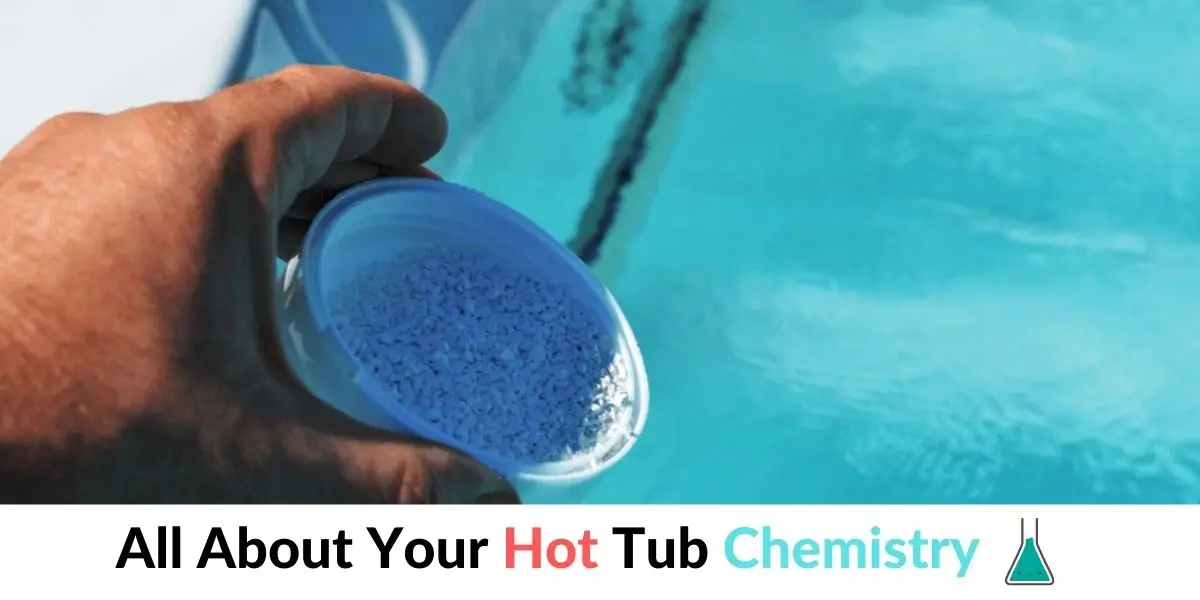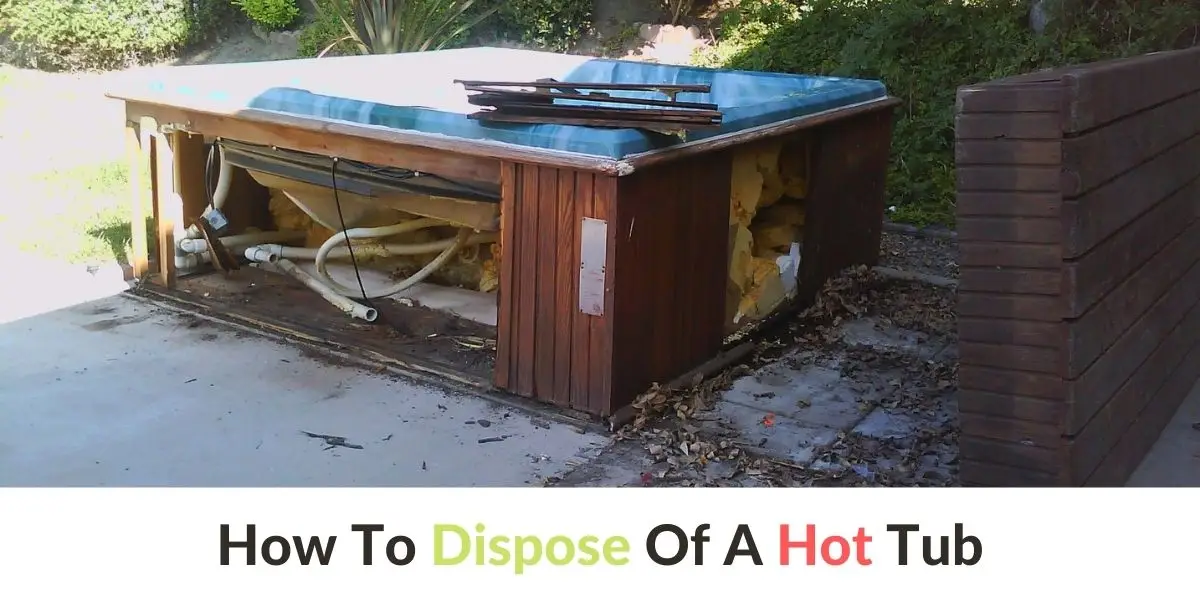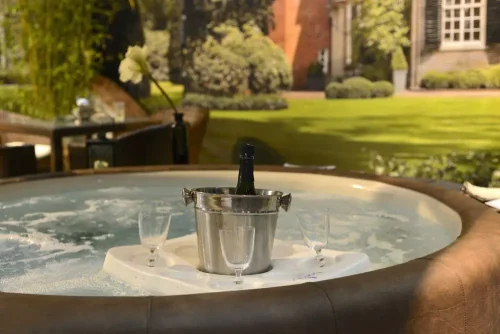How to raise Hot Tub Alkalinity
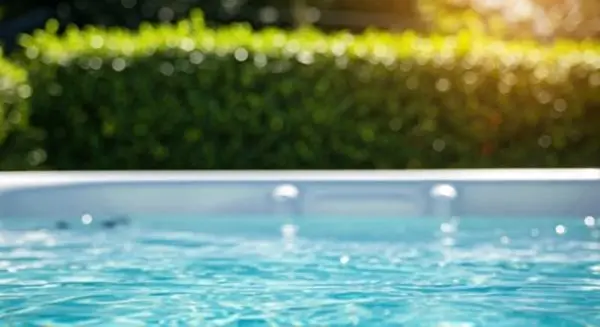
Key Highlights
- This blog is about How To Raise Hot Tub Alkalinity
- Maintaining proper alkalinity in your hot tub is essential for a comfortable and safe soaking experience.
- Low alkalinity can cause your hot tub’s pH level to fluctuate dramatically, potentially leading to skin irritation and damage to your hot tub equipment.
- The ideal alkalinity range for a hot tub is between 80 and 120 ppm.
- You can raise the alkalinity in your hot tub with baking soda or an alkalinity increaser product.
- Regular testing is key to keeping your hot tub’s water balanced and safe for soaking.
Introduction
So, you decided to enjoy a hot tub! That’s great. But owning a hot tub means you have some responsibilities, especially when it comes to water care. Making sure your hot tub’s water is just right can feel tricky, but there’s no need to worry. One big thing to know about is alkalinity. Keeping your alkalinity balanced is very important for clean, sparkling water. It also helps you enjoy pleasant and relaxing times in your hot tub. Let’s take a closer look at this.
Understanding How To Raise Hot Tub Alkalinity
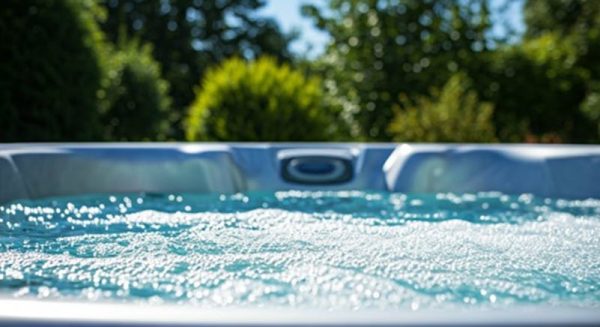
Think of alkalinity as the quiet helper of your hot tub’s water chemistry. It may not get as much notice as pH, but it is very important for keeping your hot tub water balanced and safe on the pH scale. If the alkalinity is not right, your hot tub water can become harsh and irritate your skin and eyes.
Many people mix up alkalinity with pH, but they are not the same! Alkalinity is about how well your water can handle changes in pH. It acts like a buffer to keep things steady.
Defining Alkalinity and Its Role in Water Balance
Total alkalinity refers to the amount of alkaline substances in your hot tub water, which can be adjusted using muriatic acid. These substances include carbonates, bicarbonates, hydroxides, and others. They help to neutralize acids. For example, if you add a splash of lemon juice (which is acidic) to a glass of water, the alkalinity of the water will decide if it stays stable or turns very acidic.
High alkalinity helps your hot tub water to neutralize acids effectively. This ability is important because it stops big changes in pH levels. A stable pH is key for a good soaking experience and the health of your hot tub equipment.
If the alkalinity is low, the pH level can rise and fall a lot. This leads to many problems. You can think of it like a see-saw that is always tilting back and forth. That’s what happens to your pH level in a low-alkalinity hot tub!
The Importance of Maintaining Ideal Alkalinity Levels
Maintaining the right alkalinity in your hot tub is like getting ready for a fun pool party. It helps everything work well and makes sure everyone enjoys themselves! When your alkalinity is in the best range of 80-120 ppm (parts per million), your hot tub water can balance the hot tub pH properly, which is essential for hot tub ownership. This prevents sudden changes that could be bad for you and your equipment.
Think of alkalinity as the peacekeeper for your hot tub. It stops the pH from going too high or low and causing problems. Keeping it balanced protects your hot tub and adds to your enjoyment. You can relax because your hot tub’s water is stable.
You won’t need to stress about cloudy water, skin irritation, or harm to your hot tub parts! It’s all about finding that perfect balance. Watching your alkalinity level is the first step to a great hot tub experience.
The Impact of Low Alkalinity on Your Hot Tub
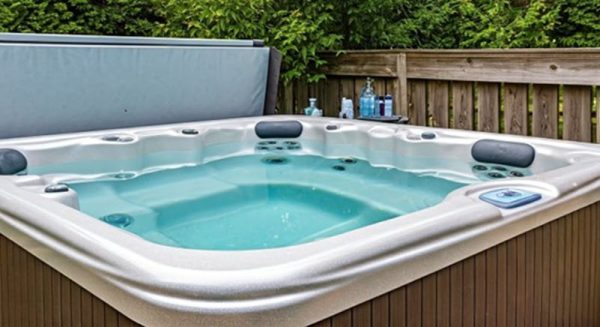
Imagine this: you are ready to unwind in your hot tub after a tiring day. But when you get in, the water looks cloudy, and your skin feels itchy and uncomfortable. What happened? It might be low alkalinity. When the hot tub water doesn’t have enough alkaline substances, it can cause the pH levels to fluctuate. This can lead to a series of unwanted problems.
Low alkalinity can hurt your comfort, and it could also harm your hot tub. This damage can result in expensive repairs over time.
How Low Alkalinity Affects Water Chemistry and Equipment
Low alkalinity creates an unstable place where the pH level can change quickly, potentially leading to high pH levels. Remember that see-saw we talked about? It can move from very acidic to very alkaline, disrupting your hot tub’s balance. Think of your hot tub water as a sensitive ecosystem – any changes can disturb its peace. These quick pH changes can alter the water’s chemistry and may require using a pH decreaser. This impacts how well your sanitizer works and affects the water quality.
Additionally, low alkalinity water can be acidic and cause corrosion of metal parts in your hot tub. This includes things like heaters, pumps, and jets. Corrosion is similar to rust. It breaks down your hot tub’s parts and can lead to expensive repairs.
Ignoring low alkalinity is like skipping your car’s regular maintenance – it may seem okay at first, but it will cause problems later!
The Connection Between Alkalinity and User Comfort
Low total alkalinity can turn your relaxing time in the hot tub into a bothersome experience. If you’ve felt dry, itchy skin or red eyes after using it, low pH may be the cause. When alkalinity is low, the pH falls into an acidic level. This makes the hot tub water rough, which can remove the natural oils that protect your skin and eyes.
Low pH can also reduce how well chlorine works in your hot tub. This can lead to more germs and other unwanted substances in the water. Without proper protection, you may experience skin irritation or even infections.
Keeping the alkalinity at the right level helps the water stay gentle on your skin and eyes. This increases your comfort and enjoyment. It’s important to find a balance where the water feels soft and welcoming, helping you relax and enjoy the benefits of your hot tub.
Preparing to Adjust Your Hot Tub’s Alkalinity
Before you start changing the alkalinity of your hot tub water, you need to have the right tools and knowledge. Just like a chef needs good utensils, you need the right equipment to get accurate measurements and keep everything safe.
Don’t worry; we will help you with the supplies you need and the safety steps to follow. Remember, getting ready is important for balancing your hot tub’s alkalinity and making the water just right.
Necessary Tools and Supplies for Alkalinity Adjustment
Before you start adjusting the alkalinity, make sure you have these important tools:
- Test Kit: You must have a reliable test kit! It helps you know the current alkalinity level of your hot tub water so you can adjust it properly. You can use test strips, liquid test kits, or digital testers.
- Alkalinity Increaser: If the alkalinity is low, you will need an alkalinity increaser. Look for products made especially for hot tubs.
- Sodium Bicarbonate (Baking Soda): Yes, plain baking soda can be very helpful! It’s easy to find and doesn’t cost much. It can raise alkalinity well. Just remember to use it carefully and make sure it’s pure, with no extra ingredients.
Safety Tips Before You Begin
Safety should always be your top priority when you deal with hot tub chemicals. Here are some tips to keep in mind:
- Protect Yourself: Always wear gloves and eye protection when dealing with any chemicals. Even common items like baking soda can hurt your skin and eyes.
- Measure Carefully: Adding too much of any chemical can upset the balance of your hot tub water. Use measuring cups or a scale to get it just right. Always follow the instructions or advice based on your hot tub’s size in gallons of water.
- Gradual Addition: Don’t pour in all the chemicals at once! Instead, add them slowly. Allow the water to mix and let the product dissolve completely before adding more.
A Beginner’s Guide to Raising Alkalinity
Your test results show low alkalinity, and you want to fix it. Don’t worry. Raising the alkalinity in your hot tub is pretty simple. By following these easy steps, you’ll be close to getting that water balance right.
Make sure to measure carefully, add chemicals slowly, and retest often so you don’t go past your goal.
Step 1: Testing Your Hot Tub’s Current Alkalinity Levels
The first step is to find out your starting point. Just like a doctor checks a patient before giving treatment, you need to know your hot tub’s current alkalinity level for proper hot tub maintenance. Get your test kit! You can use a test strip for ease or a digital tester for accuracy. Both methods are easy for testing for the first time.
If you’re using a total alkalinity test strip, dip it into your spa water from the hot tub. If you prefer, you can collect a small water sample to test with a liquid kit. Make sure to follow the instructions from the manufacturer. Wait for the time suggested before you compare the color on the strip to the chart or read the result from your digital tester. This process will show you the total alkalinity level of your hot tub.
Knowing this starting point is key. It helps you figure out how much alkalinity increaser you need to balance your water properly.
Step 2: Calculating the Required Amount of Alkalinity Increaser
Now that you know your hot tub’s alkalinity, it’s time for a little math (don’t worry, it’s simple!). Refer to the chart below to estimate the correct amount of alkalinity increaser needed to raise your alkalinity to the ideal range. Keep in mind that these are just estimates.
|
Current Alkalinity (ppm) |
Alkalinity Increaser per 100 Gallons (approx.) |
|
60-70 |
4 ounces |
|
70-80 |
3 ounces |
|
80-90 |
2 ounces |
|
90-100 |
1 ounce |
Remember to adjust these amounts based on your hot tub’s volume of water. For example, if your tub holds 400 gallons and your alkalinity is at 70 ppm, you’d need approximately 12 ounces (3 ounces x 4) to reach the ideal range.
Step 3: Adding the Alkalinity Increaser to Your Hot Tub
With your alkalinity increaser product ready, it’s time to use it in your hot tub. First, turn on the hot tub jets at a low setting to keep the water moving.
If you are using an alkalinity increaser product, make sure to follow the instructions provided by the manufacturer. For products like sodium carbonate (soda ash) or sodium bicarbonate (baking soda), it’s a good idea to dissolve the right amount in a bucket of warm water first. To lower pH levels effectively, then slowly pour this solution into your hot tub, taking into consideration the level of hot tub water. This way, it mixes well and will help avoid cloudy water.
Also, remember not to add any chemicals right in front of the jets or inlets. Doing this can harm your hot tub.
Step 4: Re-testing and Making Further Adjustments
Patience, young Padawan! After you add the alkalinity increaser, let your hot tub run for 2 to 4 hours or overnight for the best results. It’s important to test your water regularly to see if you’ve reached the right alkalinity level.
Use your test kit again to check your levels. If they are still not where they should be, repeat the previous steps. It’s safer to add a little less alkalinity increaser than too much. Adding too much can cause pH fluctuations, and you’ll have to start all over! Once your alkalinity is in the correct range, retest your pH and make any changes you need.
Conclusion
Maintaining the right alkalinity levels in your hot tub is very important. It helps keep the water balanced and makes it comfortable for users. If you understand how to adjust alkalinity, you can enjoy a safe experience in your hot tub. Here are simple steps to follow:
- Test your alkalinity levels.
- Calculate how much increaser you need.
- Make the necessary adjustments.
Regular testing is key. Always prioritize safety while doing this. With the right tools and knowledge, checking your hot tub’s alkalinity is easy. You can enjoy a balanced and relaxing soak by keeping the alkalinity at ideal levels. Also, check out our FAQ section for more helpful tips!
Frequently Asked Questions
What Is the Ideal Alkalinity Level for a Hot Tub?
The best alkalinity level for a hot tub is between 80 and 120 ppm. Keeping your total alkalinity within this range helps balance the pH of your hot tub water. It also stops the pH from changing too much.
How Often Should I Test My Hot Tub’s Alkalinity?
To keep the right alkalinity level in your hot tub, you should test it at least twice a week. Get a good test kit. Learn about hot tub chemicals and how to adjust them correctly.





